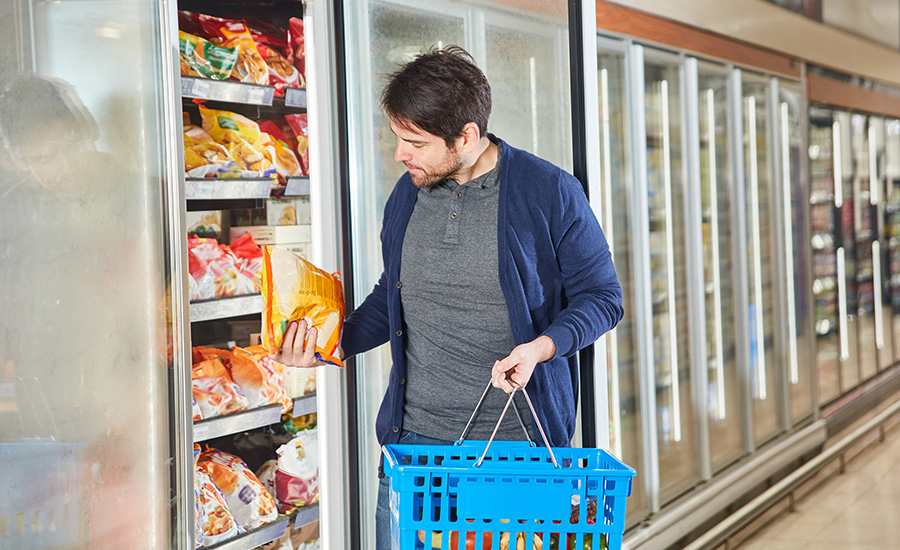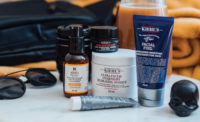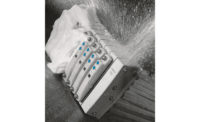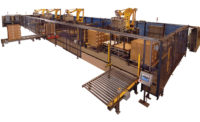As many of us know, flexible packaging can communicate brand value, support sustainable lifestyles and make a lasting impact on a consumer’s purchasing habits. However, it only takes 2.6 seconds for a consumer to make a purchasing decision between two different product options.
In addition, retailers and grocers have sold 19.2% more meat products in 2020 versus 2019, largely due to the increase in families cooking from home. These changing trends in the marketplace pose challenges to brands, packagers and others in the industry. To keep up with the quick decision making of consumers and the growing demand for meat products, brands and packagers need effective and efficient flexible packaging solutions.
Brand managers and packagers need to consider more than the meat product itself; the overall aesthetic and quality of the product packaging from purchase to consumption are just as important. With meat packaging, identifying the product value and understanding how to provide a consistent experience will ultimately determine the best flexible packaging solution.

Image courtesy of Fresh-Lock
Flexible Packaging for Meat
Whether the meat is frozen, deli or processed, the right film material and compatible closure will help maintain the overall quality. Used in combination with proper refrigeration or freezing, recloseable flexible packaging can provide a strong moisture and oxygen barrier that helps extend the shelf life of products. Once the package is opened, the moisture barrier can be maintained while the product is consumed in multiple servings. In addition to finding packaging that is suitable to your product’s specific requirements, it must also provide a good experience for the consumer.
It’s also important that the packaging type and closure formats change based on the value of the product. Offering a premium meat product, the consumer should be able to expect a premium package and closure that will match that product’s quality. Consumers need to have the same experience with meat products every time, even after multiple openings and closings. A quality zipper and flexible packaging will help preserve freshness and reduce potential leakage from the meat product’s package.
Depending on the type of meat product and the consumer’s behavior — whether they refrigerate or freeze it — zippers and closures play an important role in creating that positive experience.
Flexible Meat Packaging Infrastructure
Just as important as selecting the right film and closure for a product, is ensuring they can be incorporated properly into a company’s operations. An efficient packaging operation includes the product running fast on lines with a wide operating window, the zipper sealing well with films and structures, and no leaking or loss of atmosphere. To understand what packaging materials will work best for an operation, current packaging equipment and capabilities must be assessed. Are thermoforming or form/fill/seal being used? What is the intended design of the package?
Thermoform package processing of most meats is a high-performance process, which takes place in a low-temperature environment. Seal integrity of the package is paramount to maintain freshness through the product shelf life.
With processed meats such as pepperoni and beef jerky, avoiding added moisture is key to preserving a long shelf life. There’s a fine balance between not containing enough air, leading to the product drying out, and having too much air, contributing to mold development. Packagers can establish this atmosphere for shelf-stable products as flexible packaging helps maintain the product quality and moisture balance.
Consumer Benefits
With all flexible packaging options, brands and packagers need to provide easy-to-close, high audible features to maintain the moisture and overall quality of their products.
Especially with raw meat products, consumers don’t want to physically touch the product due to contamination and cleanliness. Flexible packaging that allows the consumer to either add a marinade to the original packaging — without repackaging the meat in a different container — or the ability to open and remove the meat touch-free is ideal.
When freezing meat products, the consumer seeks to maintain quality, prevent freezer burn and access the product over multiple uses. Recloseable flexible packaging with a quality zipper helps provide reassurance to the consumer that the product will be kept in its best condition. To avoid ice crystallization or moisture loss in the freezer, the most amount of air as possible must be removed and the package must be sealed properly. Specifically, zippers and closures allow the consumer to push out this excess air and reseal the product, creating a more vacuum-like sealed package as opposed to packages not having recloseability. Flexible packaging with more effective recloseability options can help consumers save money by avoiding food waste. The more consumers can safely enjoy their meat products, serving after serving, the better.



